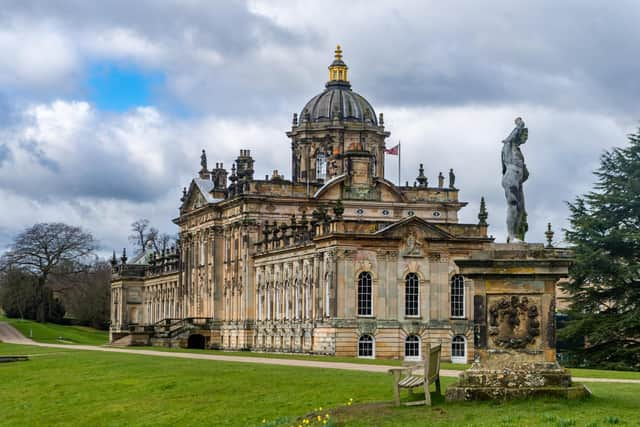Plans approved to transform Castle Howard, near Malton, and surrounding buildings back to what was originally intended
and live on Freeview channel 276
The custodians of Castle Howard, near Malton, have received consent from Ryedale District Council to redecorate the outside of the grade I listed house and numerous surrounding buildings after a study revealed it had seen some 18 colour schemes before everything was painted white in the 1960s.
Listed building consent documents submitted on behalf of the Howard family state the buildings, which date from the 17th and 18th Centuries and attract about 250,000 visitors annually, hold international interest for their “evidential, communal, historical and aesthetic values”.
Advertisement
Hide AdAdvertisement
Hide AdThe papers also emphasise how Castle Howard’s significance is in its associations with major influential figures including architects such as Vanbrugh and designers including William Morris.


However, a spokesman for the estate said over time the original colour schemes, the windows, doors and gates to Castle Howard and the adjacent laundry and other estate buildings had all been painted white, “which is visually jarring against the colour of the stone and is not historically representative”.
After being unable to reach a conclusion about which colour may be appropriate, the estate commissioned historic house decoration advisor James Finlay, who examined historic artworks of the property and analysed many layers of paint on the properties.
Mr Finlay’s report highlights how William Marlow’s paintings of the 1770s alongside many other artworks and photographs revealed that paint colours were used to mark “a hierarchical difference” between the historic uses of the 145-room mansion and its surrounding buildings.
Advertisement
Hide AdAdvertisement
Hide AdThe report states: “It would heighten what I see as deliberately ancient, less-couth, architectural surface textures and forms which belong to a progression from outlying bastions and other suggestions of military defences, and earlier categories like pyramids and obelisks – with the logical conclusion, the apogee, being the learned sophistications and beauty of house.
“Without going through the whole story, it’s clear the spirit of the place is difficult to pin down, making a choice of paint colour – such an important influence on the building’s character – potentially fraught.
“Do we draw-out Vanbrugh, or respect changes made by Sir Thomas Robinson later in the 18th century?
"Perhaps alterations to Robinson’s West Wing in the 1870s provide a more suitable end-date for architectural change?
Advertisement
Hide AdAdvertisement
Hide Ad"Or would it be better to honour the extraordinary effort of the 1960s’ restoration and keep its signature white paint?”
Commenting on the proposed colour palette to match the building’s stone, as well as brown and grey, agents for the estate said it was based on historic evidence and what works with the stone of the buildings in the 21st Century.
They added: “The proposed scheme will be transformational in taking the buildings back to what was originally intended, providing a softened and sympathetic relationship between the windows/doors and stonework.”
Granting the planning consent, council officers described the scale of the redocation task as “mammoth”, and that it had been well considered and justified through research and specialist advice.